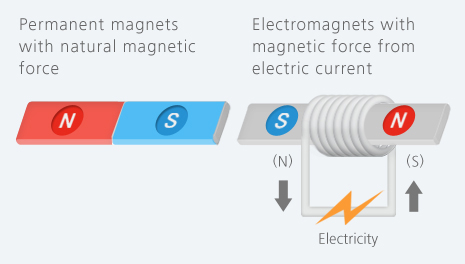I am often asked this question. It's not just from people who are commoners (laypeople) but also from engineers and technocrats with years of experience. The most frequently used phrase will come from the following "Just cutting off the cycle of on and off, will not reduce your expenses by more than seven to ten percent. The claims of savings of 40% are just a marketing gimmick.". I had a long conversation with a friend regarding the issue last week that prompted me to write this article. I'm hoping this article will help people gain an comprehension of how technologies like inverters can aid in conserving energy. Therefore there won't be any references in the article. This article was written based on my personal observations and observations in the last 8-9 years working on Bijli Bachao as well as watching the market.
In this blog, we'll mostly use Air Conditioners as a reference appliance. However, the same concept applies to refrigerators too. However, I am not able to confirm that the same applies to washing machines because of the lack of data about the market for these machines (and an understanding). Three of the three mentioned above are the only things I have seen the inverter tech in India.
Let's have a look at the Air conditioner
Many ask: "What is better in the case of a 5- Star AC that will save more energy when compare the 3 Star? or is 5 Star just marketing hype?". 5 Star models are more efficient. 5 Star models are more efficient when it comes to energy consumption and there are a variety of methods for manufacturers to improve the efficiency of air conditioners. Some examples (this checklist is not meant to be exhaustive ):
Compiling numbers
Our Scenario - Room 1
The temperature currently in this room has reached 16000 BTUs (at 40 degrees Celsius)
It is then heated to the temperature desired between 8000 BTUs (say approximately 20-21degC)
In the space, heat is circulated (through walls, humans or any other.) - 4000 BTUs/hr
So, after the 8000 BTUs have been eliminated in the steady state, the AC has to eliminate 4000 BTUs/hr to keep the temperature stable (or to limit the temperature within the 8000 BTUs).
Daikin FTL35 A Non-Inverter Slpit BEE 3 star AC
The cooling capacity of the AC 350 watts (or 3350 BTU/hr)
A 918 Watt AC consumes power. AC 918 Watts
EER or ISEER = 3350/918 = 3.65
In less than one hour, it is necessary to remove within the first hour about approximately 8000 BTUs and around 2000 BTUs which are produced because due to the gradient in temperature produced. So, approximately 10000 BTUs must be eliminated in the first hour.
Time required to run the same amount of time = 10000 x 11782 equals 0.848 time or 51 minute.
So the power consumption would be 918x 0.848 (779 Wh) which is 0.779 units
Then it must eliminate 4000 BTUs/hour. So, every hour it will be running for 4000 x 11782 = 0.3395 hours or 20 minutes.
Power Consumption per Hour equals 918x 0.3395 is 311Wh which is 0.311 Units.
In the event that the Air conditioner has been on for 8 hours, the total energy consumed will be 0.779 * 7 . + 0.331 which is 2.96 units.
Daikin FTKL35 An inverter Split BEE 3 star AC
Cooling Capacity The range of AC The Cooling Capacity of the AC range can be (Max) 3700 Watts (or 12600 BTU/hr) and (Min) 1070 (or 3650 BTU/hr)
Power Consumption The power consumption range of the AC Its power consumption can be measured in (Max) 1200W, as well as (Min) 1200W as well as (Min) 1200 Watts and (Min) 210 Watts.
It is assumed that this variation will be linear, it runs along an unidirectional line. The relation between power consumption and energy is explained in
The value of y (cooling capacity) = mx (power consumption) + c
and C and C 512.12
It's exactly identical to non-inverter AC. In the initial hour, which is to take away approximately 10000 BTUs. In steady state, it will eliminate 4000 BTUs per hour (or 1137 watts)
Let's suppose that, in an hour that you are in, the rate of operation created through AC AC can be seen at a speed that is averaging 10.000 BTU/hr (or 2843 Watts).
If you use the line formula, then the energy consumption is
(2843 + 512.12)/2.656 = 877.59 Watts
So, the total consumption of units in the first hour is 877.59 Watts. This is 0.87759 units. (which is greater than non-inverter AC's 1st hour). If we presume that it is operating in a linear manner.
In the next hours the system must eliminate 4000 BTUs/hr, or 1137 Watts.
In the same formula for line that calculates power consumption:
(1137 + 512.12)/2.656 = 235.27 Watts
Therefore, the amount consumed of units following an initial hour of consumption is 235.27 wh or 0.23527 units
Total Power Consumption over 8 hours equals 0.87759 + 7 + 0.23527 = 2.5244
Total Savings
Non-inverter used 2.96 units in 8 hours.
The inverter AC consumed 2.5244 units in just eight hours.
Savings equal 0.42552 units, which is 15 percent more than 2.96
In the light of this calculation, by simply switching the compressor to an inverter equivalent, you could reduce energy use over the course of eight hours.
What is the reason inverter AC give better efficiency and smaller tonnage?
In cooler temperatures, the amount of gas that is pumped out is less. This means that less heat is that is dissipated by the condenser. The condenser will stay cooler, and there is less strain on the compressor. This means that the compressor draws less power and is more efficient. The condenser is already large.
Important Notes Based on the above calculations
What meaning could you draw from the above calculations? You can apply them to your decision-making process?
- Inverter AC is ideal if they are equipped with a substantial volume of air so that they can provide your cooling requirements to the bare minimum and more.
- Inverter ACs that aren't big enough are a problem and will not help you save any energy. However, large inverter ACs can be very efficient when they're in the vast capacity for cooling (or tons) range.
- It is certainly feasible to cut down on energy usage by making use of the inverter AC. Its switch between off and on will not help in decreasing your energy use. It is recommended to maintain the temperature at a level that you are comfortable with and utilize it for a prolonged.
Does ISEER numbers bring any benefit for consumers?
The ISEER number or the energy consumption per year of electricity presented to you, is only meant to help you compare ACs. It is an important tool in making the right purchase decision. However, it's not appropriate in real life because the ISEER that you get from your AC Inverter might be different from the one that is described. It's based on the conditions in the conditions in which the inverter AC operates. For non-inverter ACs the ISEER doesn't change depending on operating conditions. In the event that your inverter AC is huge with a huge cooling capacity, it could receive more ISEER than is stated. For smaller inverter AC the ISEER is substantially lower. An inverter AC that has a greater cooling capacity is likely to have a more ISEER than an AC with a lower amount of capacity for cooling.
What are we required to be doing as consumers?
The most important thing to do is request information. With just a handful of manufacturers that offer lots of information to analyze. Yes, we do have information from BEE who receives test results from manufacturers , which are carried out within the NABL accredited laboratory, but it's not enough. The calculation for ISEER made based on the power consumption of ACs that are inverters operating between fifty and 100 percent capacities. It doesn't take into account the capacity the AC can run at or the amount of power that it uses at its capacity. The inverter's nature AC is so intricate that it is difficult to design an apple-to-apple standard without standardizing the calculation process. However, there's something more than standard comparisons that offer additional details. If you don't want to get into complex calculations, you could simply check out ACs that offer greater cooling capacity. You can ask for the information!

